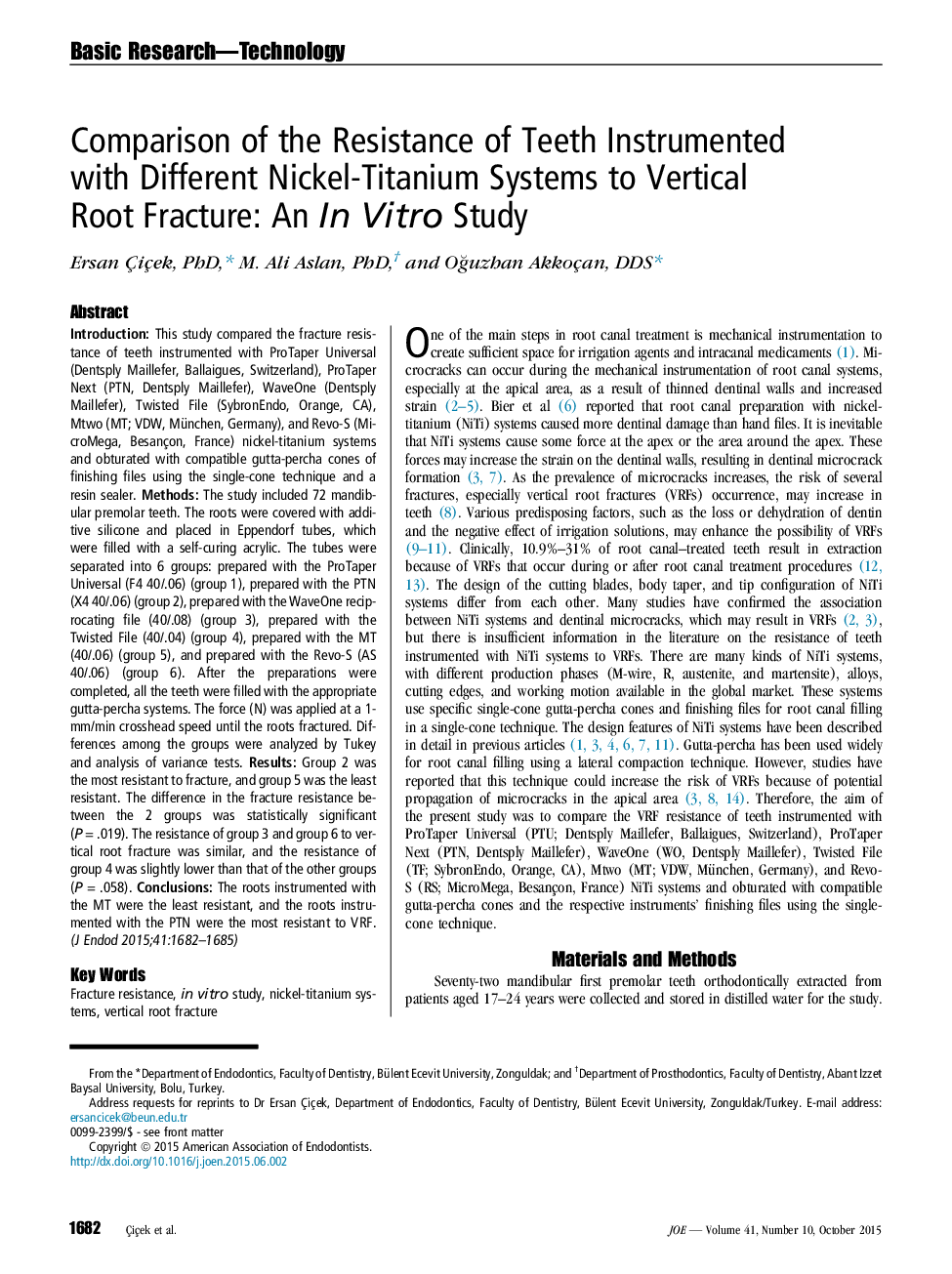| کد مقاله | کد نشریه | سال انتشار | مقاله انگلیسی | نسخه تمام متن |
|---|---|---|---|---|
| 3148070 | 1197387 | 2015 | 4 صفحه PDF | دانلود رایگان |

• The effect of several nickel-titanium systems was compared in terms of the resistance to vertical root fractures.
• A modified setup that could mimic the clinic conditions was used in this study.
• Because of the setup, the results were more reliable.
IntroductionThis study compared the fracture resistance of teeth instrumented with ProTaper Universal (Dentsply Maillefer, Ballaigues, Switzerland), ProTaper Next (PTN, Dentsply Maillefer), WaveOne (Dentsply Maillefer), Twisted File (SybronEndo, Orange, CA), Mtwo (MT; VDW, München, Germany), and Revo-S (MicroMega, Besançon, France) nickel-titanium systems and obturated with compatible gutta-percha cones of finishing files using the single-cone technique and a resin sealer.MethodsThe study included 72 mandibular premolar teeth. The roots were covered with additive silicone and placed in Eppendorf tubes, which were filled with a self-curing acrylic. The tubes were separated into 6 groups: prepared with the ProTaper Universal (F4 40/.06) (group 1), prepared with the PTN (X4 40/.06) (group 2), prepared with the WaveOne reciprocating file (40/.08) (group 3), prepared with the Twisted File (40/.04) (group 4), prepared with the MT (40/.06) (group 5), and prepared with the Revo-S (AS 40/.06) (group 6). After the preparations were completed, all the teeth were filled with the appropriate gutta-percha systems. The force (N) was applied at a 1-mm/min crosshead speed until the roots fractured. Differences among the groups were analyzed by Tukey and analysis of variance tests.ResultsGroup 2 was the most resistant to fracture, and group 5 was the least resistant. The difference in the fracture resistance between the 2 groups was statistically significant (P = .019). The resistance of group 3 and group 6 to vertical root fracture was similar, and the resistance of group 4 was slightly lower than that of the other groups (P = .058).ConclusionsThe roots instrumented with the MT were the least resistant, and the roots instrumented with the PTN were the most resistant to VRF.
Journal: Journal of Endodontics - Volume 41, Issue 10, October 2015, Pages 1682–1685